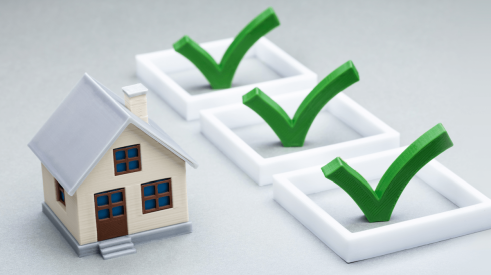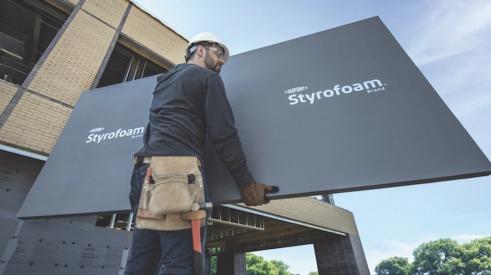AEC Industry Reported High Levels of Fraud, Cyber Breaches, and Security Incidents in 2017
Fraud, cyber attacks, and security risks continue to plague the construction, engineering and infrastructure sector at high levels, according to senior corporate executives surveyed worldwide for the 2017/18 Kroll Annual Global Fraud & Risk Report.
The survey by the risk solutions provider found that 83% of respondents experienced at least one fraud incident in 2017. Nearly all (93%) reported a cyber incident, and 67% reported some other kind of security incident. Information theft, loss, or attack was the most prevalent type of fraud experienced in the sector, cited by 33% of respondents, up 15 percentage points from 2016. Regulatory or compliance breach was second on the list, reported by 30% of executives, almost twice the reported incidence in last year’s survey (18%).
Physical theft or loss of intellectual property (IP) was the most prevalent type of security incident, with 43% saying their organizations fell victim to these crimes. “There is a convergence between physical and digital threats, with issues arising from equipment with sensitive data being stolen or lost, for example, or employees with access to highly sensitive information accidentally or intentionally causing a breach,” said Jason Smolanoff, senior managing director and global cyber security practice leader for Kroll.
Bolstering Energy Efficiency Would Produce Significant Health Benefits, ACEE Study Says
Strengthening energy efficiency standards by an achievable 15% would reduce heart attacks, respiratory disease, asthma attacks, and premature death, according to a new study by the American Council for an Energy Efficiency Economy (ACEEE). More energy efficient buildings and transportation would reduce emissions of nitrogen oxides by 18% and sulfur dioxide by 23%. Cleaner air would result in nearly 30,000 fewer asthma episodes, save more than six lives a day, and avoid $20 billion a year in health costs.
These benefits would impact some states and cities more than others. Based on the dollar value of avoided health harms, Pennsylvania would realize the greatest benefits, followed by New York, Ohio, Illinois, Texas, Michigan, Florida, Indiana, Tennessee, and North Carolina.
In the built environment, simple measures such as sealing holes would reduce the influx of outdoor pollution while improving HVAC efficiency and comfort for occupants. Sealing holes would also improve indoor air quality by blocking air containing moisture that aids the growth of mold.
Federal Tax Credit for Builders Who Construct Energy-Efficient Homes Retroactively Extended
Congress extended the 45L Federal Tax Credit for builders who construct energy-efficient homes for all homes sold in 2017. The credit had expired, but Congress retroactively extended the provision.
Builders whose homes were sold in 2017 can work with their HERS Raters in producing the tax credit compliance calculations and reports to receive the $2,000 credit. RESNET has updated the accredited HERS Rating Software programs to reflect the change.
Rooftop Solar Could Produce Nearly 40% of Electricity in U.S.
If every suitable roof in the U.S. had solar panels, the resulting electricity production could meet almost 40% of the nation’s needs. That’s the conclusion of a study by researchers at the U.S. National Renewable Energy Laboratory, who estimated that there are 8 billion square meters of suitable roofs in the U.S.
If all of those roofs had PVs, they would generate about 1,400 terawatt hours of electricity each year. About two-thirds of that total would come from small residential buildings. A less comprehensive 2008 NREL study estimated that rooftops could generate just 22% percent of the nation’s electricity needs. The new estimate shows a higher percentage partly because solar panel efficiency has improved, and because new sources of data made a more accurate estimate possible.
New Resource for Information on Latest Developments in Residential HVAC, Heat Pump Water Heaters
The U.S. Department of Energy’s Residential Program Solution Center has a new feature that offers information on developments in efficient HVAC systems and heat pump water heaters. The pages provide access to the latest innovations, reports, analysis, and best practices on these systems.
Depending on the region, replacing heating and cooling equipment with higher efficiency equipment can reduce energy use by 50% for electric heating and cooling systems and 10% for gas furnace heating systems, the DOE says.
Advertisement
Related Stories
Codes + Standards
Public Comment Period Opens for National Green Building Standard Updates
The 45-day public comment period for draft 2 of the 2024 NGBS begins on April 12, 2024
Codes + Standards
Public Comment Period Opens for 2024 National Green Building Standard Update
The 45-day public comment period opened Aug. 18, and comments must be submitted by Oct. 2, 2023
Codes + Standards
The Inefficiencies of the Latest Energy Code
The 2021 edition of the International Energy Conservation Code (IECC) hampers the return on investment for builders and homebuyers







